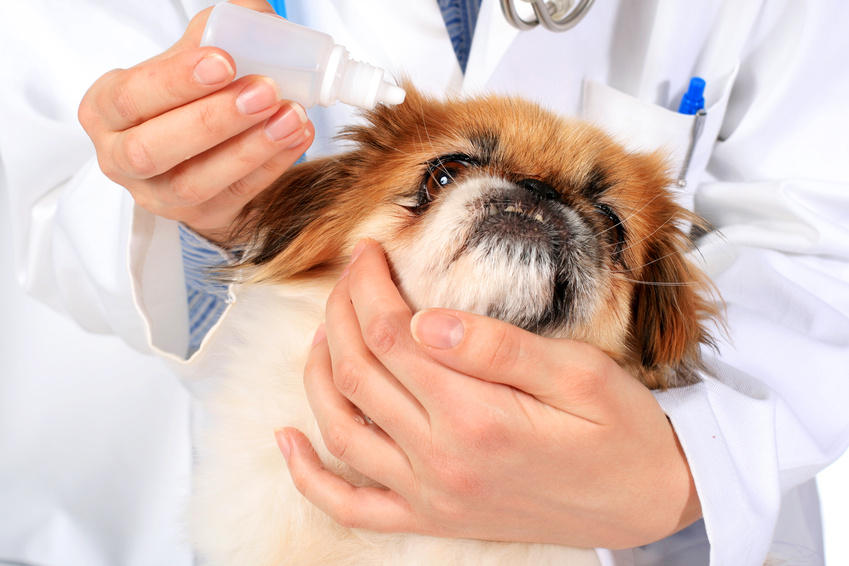Corneal ulcers
The cornea is the clear front portion of the eyeball. It acts to maintain the shape of the eye and protect its contents, whilst allowing light to travel through to the other components of the eye to enable vision. The cornea itself is made up of four different layers of cells and is supplied by vessels and protected by a film of tears.
Damage to the cornea (whether this is due to scratches, dust or foreign bodies such as grass seeds) can result in ulcers. In cats, Feline Herpes Virus (FHV-1) is also a common cause of corneal ulcers. Corneal ulcers are painful and cause inflammation and often a discharge from the eye. Inflammation is the body’s response to injury and often presents as cloudiness, blood vessels on the surface of the eye becoming more prominent and pain (you will probably notice your pet blinking a lot or holding its eye partially or completely shut).
Diagnosis of corneal ulcers involves placing a fluorescent dye on the cornea, which will show up any defects or ulcers in the corneal surface. The eye and associated conjunctival membranes are checked for the presence of foreign bodies, which can lodge behind the third eyelid.
Treatment of corneal ulcers and other eye conditions will often involve some eye drops or ointments, which must be applied several times a day. For cats with suspected or confirmed FHV-1 infections, antiviral medications may also be prescribed. Keeping your pet inside and away from bright light will help reduce the pain he/she is feeling. Revisits are necessary at frequent intervals to assess the healing process. Occasionally drops and ointments are not sufficient and other treatments or procedures are required to help the cornea heal. Without treatment ulcers can become deeper and deeper until they penetrate through the cornea completely, causing massive damage to the eye.
As you are aware, eyes are very important in providing vision, so it is imperative that we treat any problems with them as soon as they develop. If you have any concerns about your pet’s eyes it is best to seek veterinary attention immediately.




